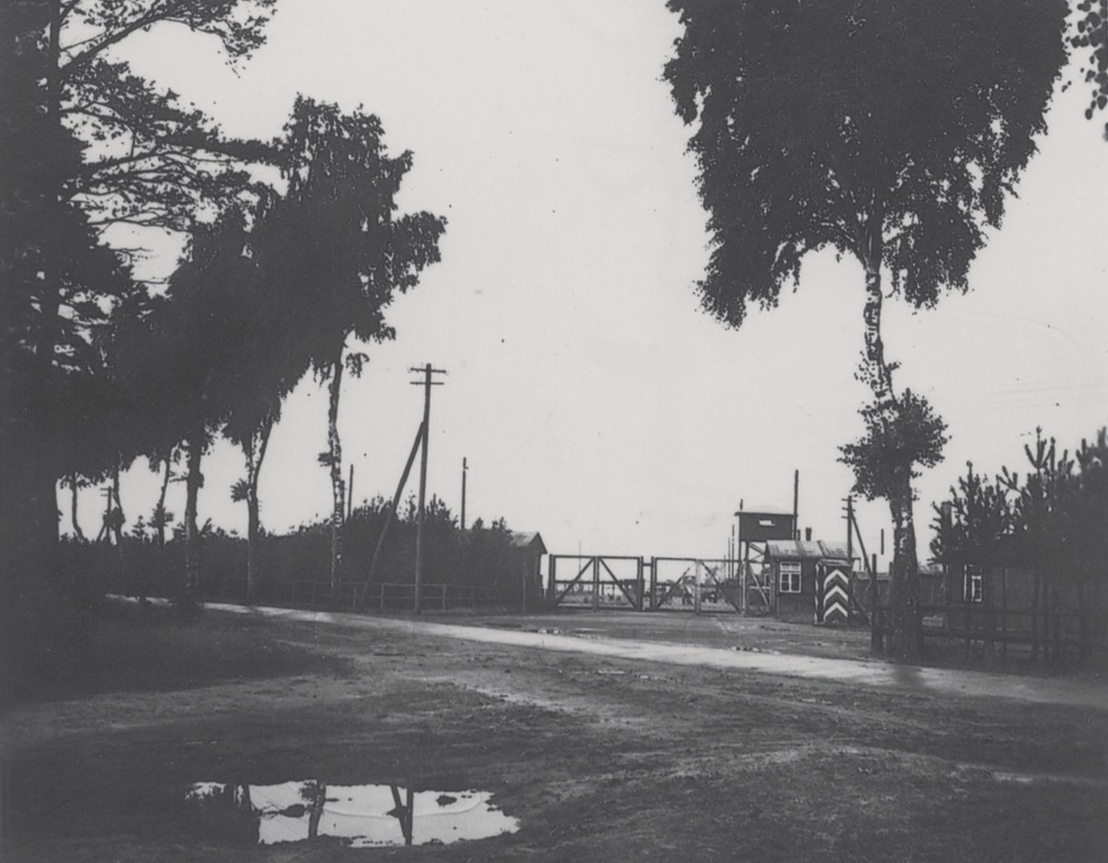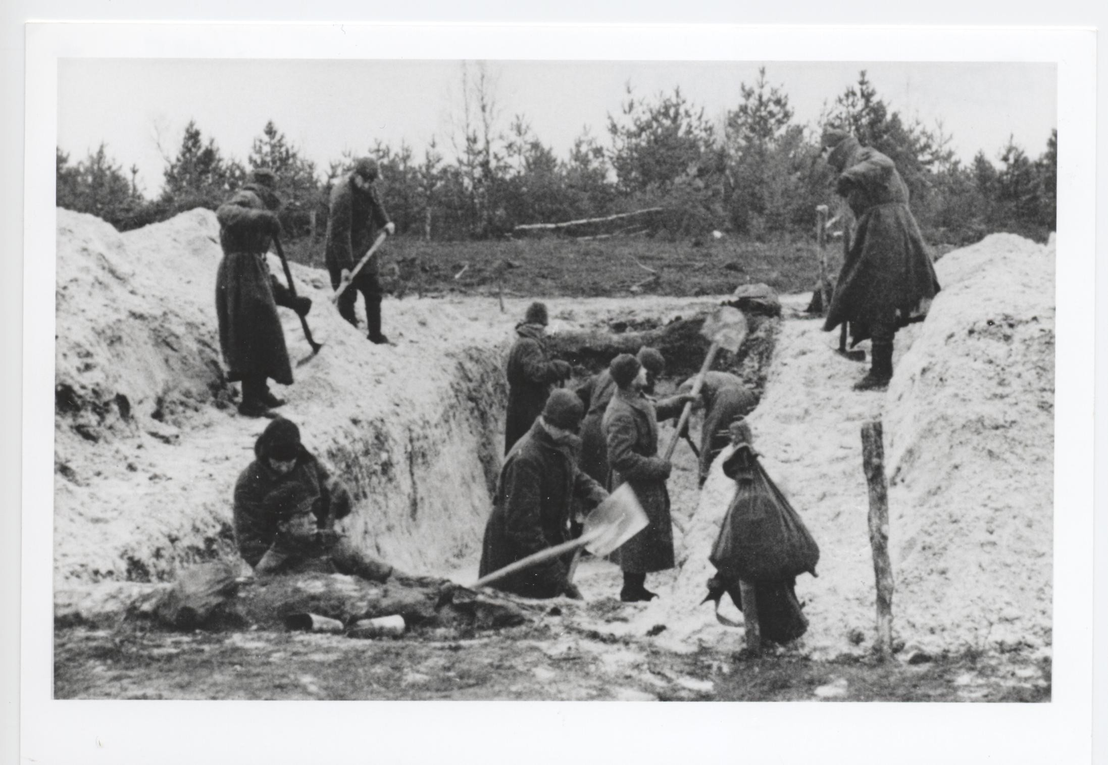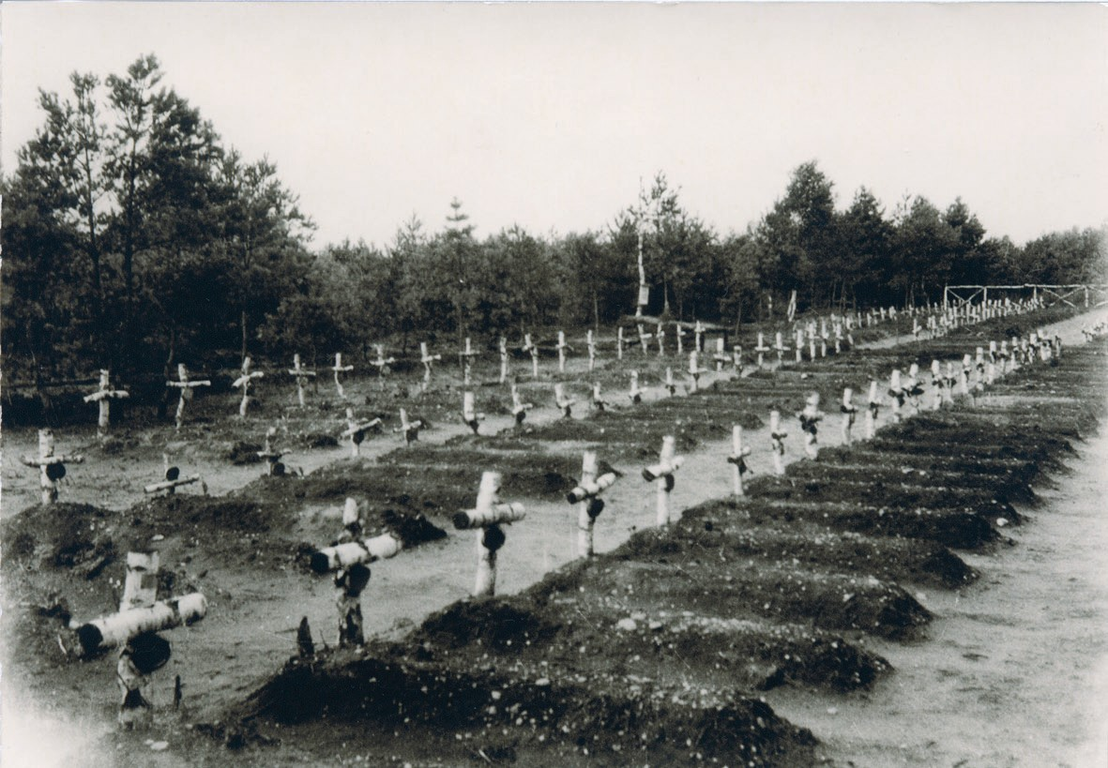The POW Camp (1940-1945)
The POW camps on Lüneburg Heath were part of an enormous system of camps operated by the Wehrmacht. This system consisted of over 200 main camps and thousands of work details and construction brigades. Shortly before the start of the war, a camp of huts near Fallingbostel was designated as the location for the POW camp known as Stalag XI B. This became one of the Wehrmacht’s largest POW camps during the war, at times holding up to 95,000 prisoners from different countries. Most of these POWs were assigned to one of more than 2,000 work details. In June 1940, the Belgian and French POWs assigned to Work Detail 601 were housed in the former Bergen-Belsen construction workers’ camp.
The Bergen-Belsen camp was significantly expanded from June 1941 as Germany prepared to invade the Soviet Union. It was transformed into an independent camp known as Stalag XI C (311) which was intended to hold 20,000 Soviet POWs. Two other so-called “Russian camps” were set up nearby: Stalag XI D (321) at Oerbke and Stalag X D (310) at Wietzendorf.
Around 41,000 Soviet POWs had died in these camps of starvation, exhaustion and disease by the end of March 1942, and a total of 50,000 Soviet POWs died there by the end of the war.
Stalag XI C (311) was disbanded in the summer of 1943, and Bergen-Belsen became a branch camp of Stalag XI B at Fallingbostel. It remained in operation as the central hospital for Soviet POWs in the region until January 1945. Italian military internees were treated there as well from August 1944. After the suppression of the Warsaw Uprising in October 1944, around 1,000 members of the Polish Home Army were also housed in a separate section of the POW camp.
-
Soviet POWs
Soviet POWs
The first transports from the Soviet Union arrived at Bergen-Belsen in July 1941. By early November of the same year, around 21,000 Soviet POWs had been imprisoned in the POW camp. A hospital for these prisoners was set up nearby in the wooden huts of the former army construction camp. More stable new huts were supposed to be built to house the POWs, but construction proceeded very slowly. As a result, the prisoners were forced to shelter in earthwork dens they had dug themselves, in lean-tos made of branches or in provisional tents well into the autumn. The completely inadequate living conditions led to consumption and epidemics. Dysentery was already raging through the camp by August 1941.
In the summer and autumn of 1941, nearly 10,000 prisoners were assigned to one of the around 150 work details of Stalag XI C (311) in Bergen-Belsen. At least 500 POWs – mostly Jews and communist party officials – were selected by a Gestapo Einsatzkommando (“task force”) and sent to the Sachsenhausen concentration camp, where they were murdered.
When a typhus epidemic broke out in November 1941, the camp was placed under quarantine. Thousands of sick prisoners who were no longer able to work were taken from the external work details of the Bergen-Belsen, Fallingbostel and Oerbke camps and transported back to the main camp. By the spring of 1942, around 14,000 Soviet POWs had died in Bergen-Belsen as a result of the disastrous conditions in the camp and the work details. Initially these prisoners were buried in individual graves, but from October 1941 they were buried in mass graves in the camp cemetery around 600 metres away.
From the summer of 1942, there were very few prisoners in the camp outside of the hospital. When the southern section of the camp was taken over by the SS in June 1943, Stalag XI C (311) was disbanded. However, the hospital with its 1,200 beds continued to operate as a branch camp of Stalag XI B in Fallingbostel. Sick POWs from the work details in the region were taken to this hospital, where a large number of them died.
The Wehrmacht finally handed over the entire POW camp to the SS in January 1945, by which point over 19,500 Soviet POWs had been buried in its cemetery.
-
Italian Military Internees
Italian Military Internees
Fascist Italy was allied with Germany until the summer of 1943. After Mussolini was deposed and Italy surrendered to the Allies, the Wehrmacht occupied northern Italy and established a new fascist Italian puppet state there. Around 600,000 soldiers who refused to fight for the Germans were disarmed and deported to Germany for forced labour. These soldiers were viewed as traitors by the Nazi leadership, the Wehrmacht and the German people. They were denied the POW status they should have been granted according to the Geneva Convention and were instead classified as “Italian military internees” (IMI) because they were officially considered interned soldiers from a state still allied with Germany. This status meant they had no access to the critical services provided by the International Red Cross, like food packages, medication and inspections by international delegations.
In the autumn of 1943, the Oerbke and Wietzendorf camps were used as transit camps for tens of thousands of Italian military internees who were taken from there to work details throughout northern Germany. From January 1944, Wietzendorf was the site of one of the largest camps for Italian officers known as Oflag 83. There was a hospital for Italian military internees in the Oerbke camp, but its patients were transferred to a separate section of the Bergen-Belsen POW hospital in late July 1944. Most of these Italian prisoners were suffering from tuberculosis or had been injured while working. 142 Italian military internees had died in the Bergen-Belsen hospital by the end of the war and were buried in a separate area at the edge of the POW cemetery.
-
Polish POWs
Polish POWs
In October 1944, around 1,000 officers and soldiers of the Polish Home Army, around half of them women, were imprisoned in a separate section of the Bergen-Belsen branch camp. The Home Army, or Armia Krajowa, had organised an uprising against the German occupiers in Warsaw in August 1944. The prisoners included the deputy commander of the insurgents, other military leaders from the Armia Krajowa and members of Warsaw’s cultural elite.
In the negotiations before the insurgents surrendered, the Wehrmacht assured them that they would be handled in accordance with the Geneva Convention. The Polish POWs were therefore treated much better than the Soviet POWs or the Italian military internees, and an International Red Cross delegation was permitted to visit them in Bergen-Belsen.
The members of the Polish Home Army spent a very short time in Bergen-Belsen. The female officers were transferred to a camp near Erfurt in late December 1944. At the same time, the female enlisted soldiers were moved to the Oberlangen camp in the Emsland region, where they were liberated in April 1945 by Polish units serving in the British Army. The 500 male officers from the Polish Home Army went through an odyssey: In January 1945 they were transported from Bergen-Belsen to a camp in Pomerania, but as the front moved closer they soon had to leave and march west for weeks. After stopping briefly at the Sandbostel POW camp, they were finally liberated by British troops on 2 May 1945 near Lübeck.








